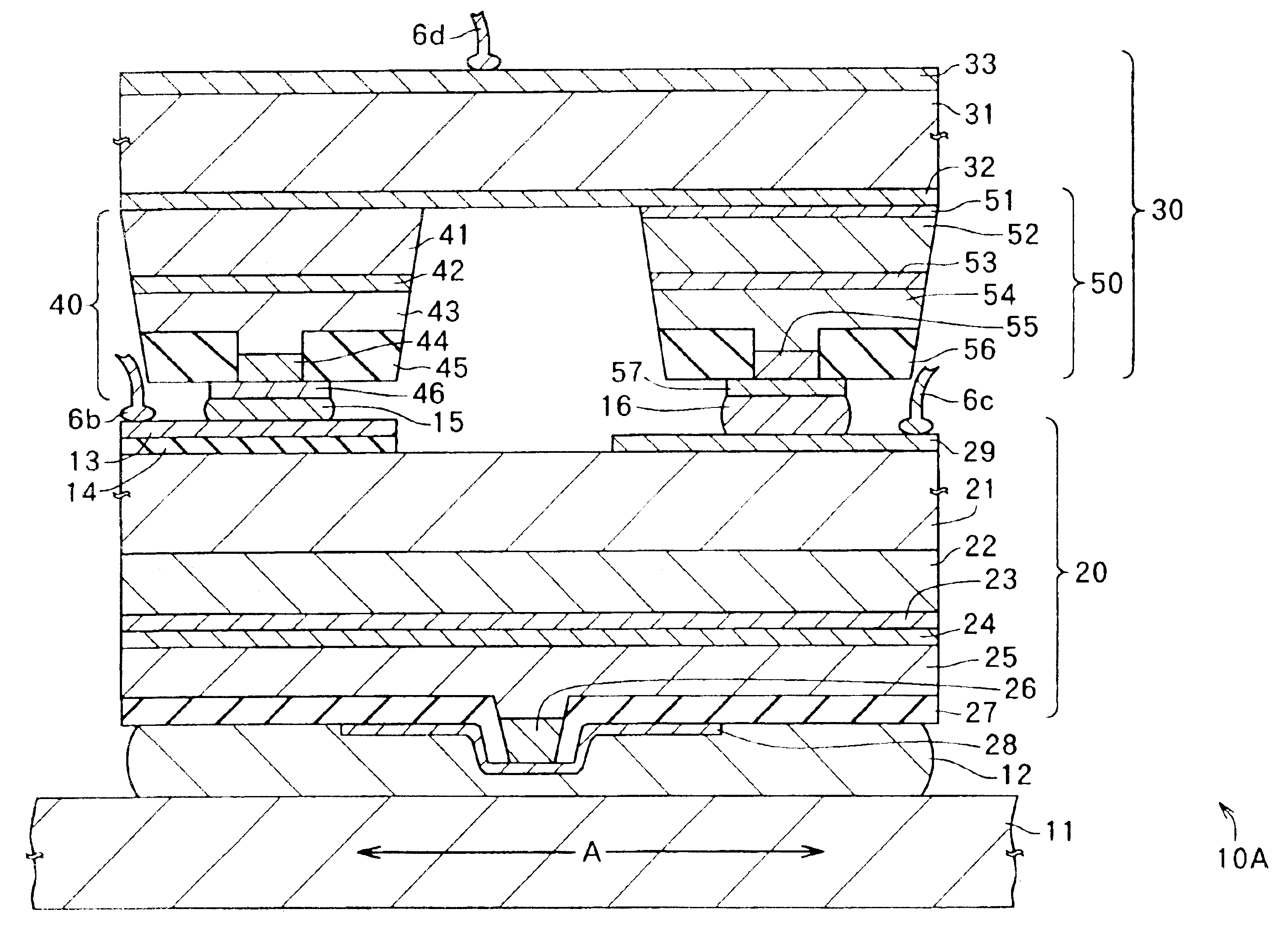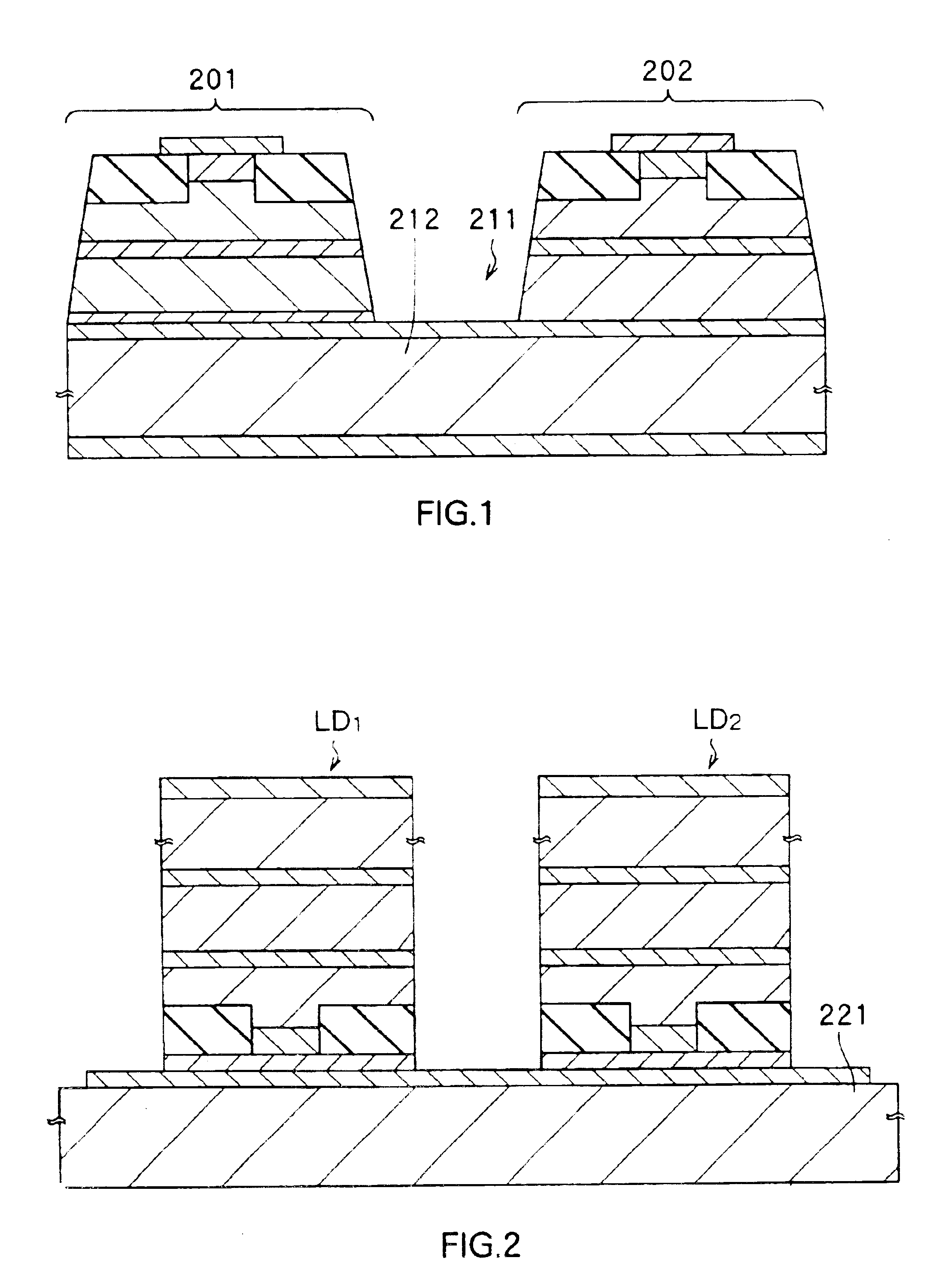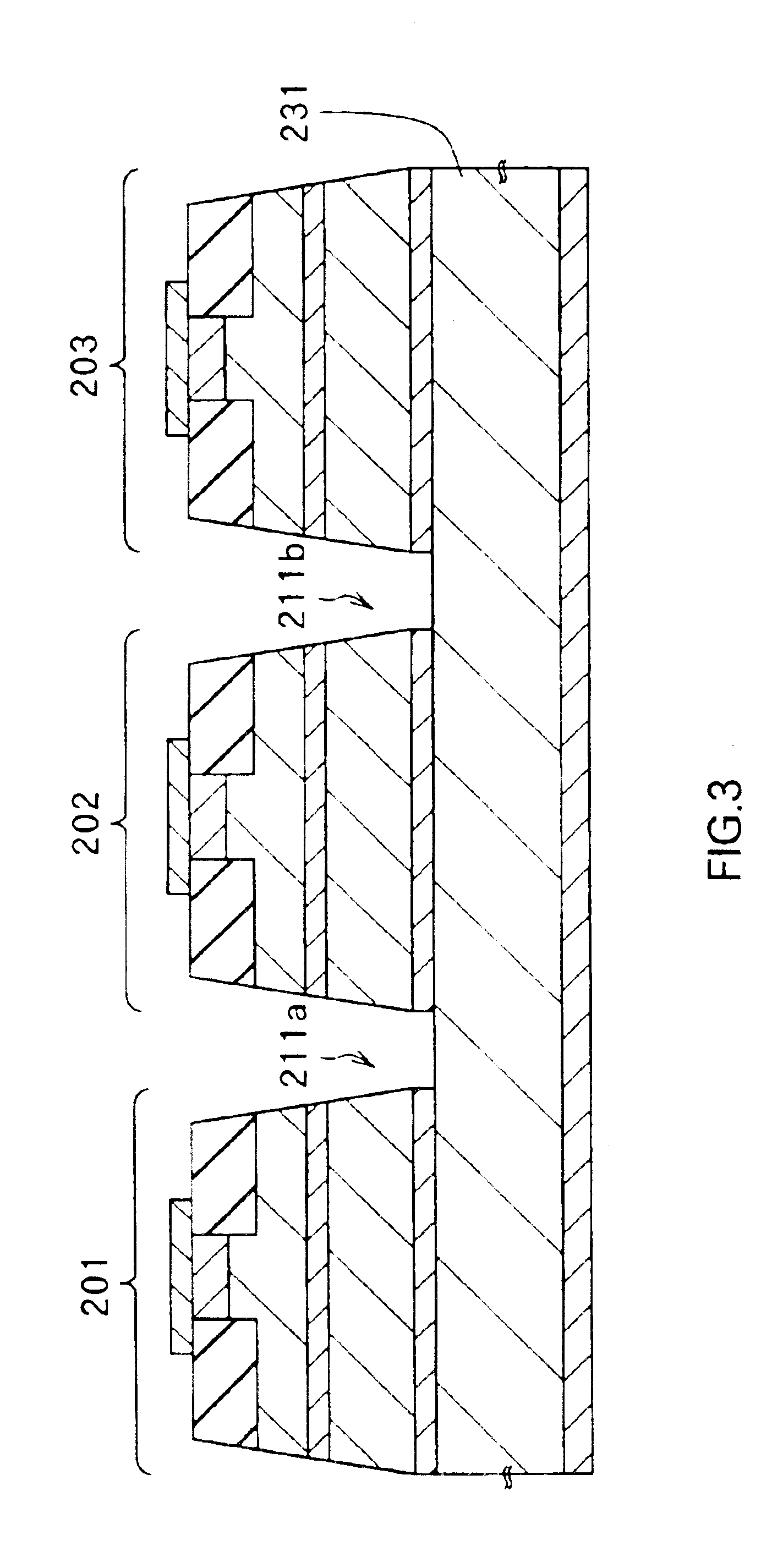Semiconductor light emitting device with stacked light emitting elements
a light emitting device and semiconductor technology, applied in the field of semiconductor light, can solve the problems of poor controllability of light emitting point intervals, difficult to integrate lasing portions on the same substrate as one chip, hybrid type multiple-wavelength laser, etc., and achieve the effect of convenient manufacturing
- Summary
- Abstract
- Description
- Claims
- Application Information
AI Technical Summary
Benefits of technology
Problems solved by technology
Method used
Image
Examples
first embodiment
[0039]FIG. 4 shows the sectional structure of a light emitting device 10A according to a first embodiment of the invention. The light emitting device 10A has a supporting base 11, a first light emitting element 20 disposed on one face of the supporting; base 11, and a second light emitting element 30 disposed on the side of the first light emitting element 20 opposite to the supporting base 11.
[0040]The supporting base 11 is made of a metal such as copper (Cu) and serves as a heat sink for dissipating heat generated by the first and second light emitting elements 20 and 30. The supporting base 11 is electrically connected to an external power source (not shown) and also has the role of electrically connecting the first light emitting element 20 to the external power source.
[0041]The first light emitting element 20 is, for example, a semiconductor laser capable of emitting light having a wavelength of around 400 nm. The first light emitting element 20 has a configuration in which an ...
second embodiment
[0089]FIG. 11 shows a sectional structure of a light emitting device 10B according to a second embodiment of the invention. The light emitting device 10B has the same configuration, action, and effects as those of the light emitting device 10A except that a second light emitting element 60 is provided in place of the second light emitting element 30 in the light emitting device 10A in the first embodiment. The same reference numerals are given to the same components as those of the first embodiment and their detailed description will not be repeated.
[0090]The second light emitting element 60 in the second embodiment has the same configuration as that of the second light emitting element 30 except that a lasing portion 70 capable of emitting light having a wavelength in the band on the order of 500 nm (for example, 520 nm) is provided in place of the lasing portion 40 of the second light emitting element 30 in the first embodiment and the buffer layer 32 is not provided.
[0091]The las...
third embodiment
[0108]FIG. 17 shows a sectional structure of a light emitting device 10C according to a third embodiment of the invention. The light emitting device 10C has the same configuration, action, and effects as those of the light emitting device 10A of the first embodiment except that a first light emitting element 90 is provided in place of the first light emitting element 20 in the light emitting device 10A of the first embodiment, and a supporting base 17 is provided in place of the supporting base 11. The same reference numerals are given to the same components as those of the first embodiment and their detailed description will not be repeated here.
[0109]The first light emitting element 90 is largely different from the first light emitting element 20 with respect to the point that a different material is used for a first substrate 91. For example, the first substrate 91 is made of sapphire having a thickness of about 80 μm. Sapphire is an insulating material and is transparent in the ...
PUM
 Login to View More
Login to View More Abstract
Description
Claims
Application Information
 Login to View More
Login to View More - R&D
- Intellectual Property
- Life Sciences
- Materials
- Tech Scout
- Unparalleled Data Quality
- Higher Quality Content
- 60% Fewer Hallucinations
Browse by: Latest US Patents, China's latest patents, Technical Efficacy Thesaurus, Application Domain, Technology Topic, Popular Technical Reports.
© 2025 PatSnap. All rights reserved.Legal|Privacy policy|Modern Slavery Act Transparency Statement|Sitemap|About US| Contact US: help@patsnap.com



